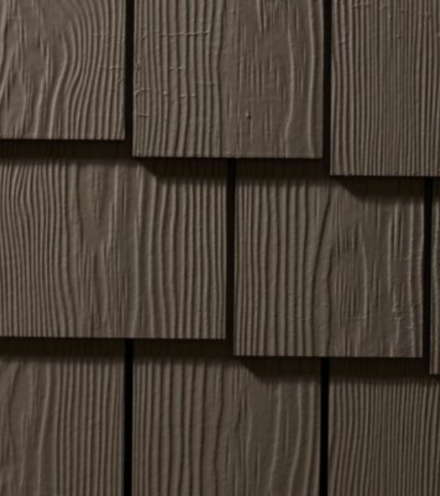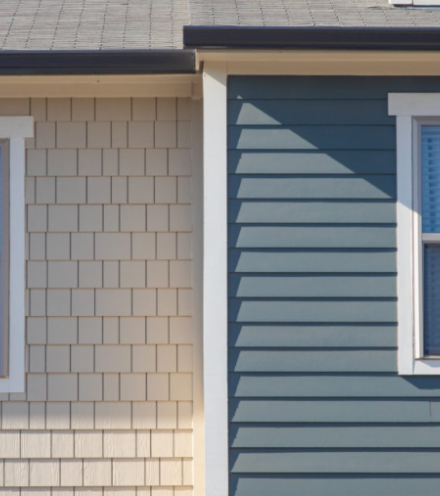In Texas, homeowners understand that house siding is a critical component that is essential to curb appeal and structural performance. It does much more than provide good looks and a great first impression. Home siding is quite literally the home’s first line of defense against the elements outside. Damaged or low-quality siding can compromise the home’s ability to provide a safe, comfortable, reliable, and appealing oasis for friends and family.
Texas is in a unique situation that presents multiple challenges for home builders. From humid and hurricane-prone towns along the Gulf of Mexico, west to severely dry, desert regions, and north to the panhandle winter freeze, Texas homes must be able to stand up to a wide variety of weather-related challenges. Regardless if it’s in Houston, Dallas, San Antonio, Austin, El Paso, Lubbock or Amarillo, these homes all need a siding material with exceptional strength.

Strength and durability aren’t the only vital characteristics that Texas homeowners are looking for when it comes to choosing the best house siding. After all, siding plays a large role in the exterior aesthetic of the home, too. It’s important for house siding to be both attractive and practical.
The good news is that Texas homeowners can find a solution that fits the best of both worlds, as there is an innovative new siding material available that is perfect for the diverse conditions found throughout the state of Texas.

Most Common Siding Problems in Texas
When siding becomes an issue, it can affect so much more than curb appeal, including quality of life, financial expense, and safety. Take a look at the most common problems with house siding in Texas.
1. Warping, Buckling, Rotting
Traditional wood siding and vinyl siding are particularly susceptible to moisture, a common occurrence in Texas, especially along the Gulf Coast. Excess moisture, whether from torrential rain or coastal humidity, can wreak havoc on home siding, causing panels to warp, buckle, and even rot. Siding that appears ‘wavy’ has usually experienced moisture damage that has caused siding panels to warp and curve.
2. Hot to the Touch
Certain areas of Texas can experience extreme temperatures. The state’s hottest temperature on record is a sizzling 120 ° Fahrenheit! House siding isn’t equipped to manage these extreme temps, and it can cause a dangerous situation. In particular, metal siding poses a dangerous threat of becoming hot to the touch, which can be harmful to people and animals, not to mention making indoor climate control a real challenge. Siding that reacts to temperature extremes in this way poses a roadblock for energy efficiency.
3. Flammability
Flammability also becomes an issue for homes located around parts of the state, like the Trans-Pecos region, the Northern Plains, and parts of Texas’ Hill Country. The dry climate and high temperatures can form the perfect storm for igniting a house fire, especially when the siding is a flammable material, like real wood beams.
4. Fading and Sun Damage
Clear skies make Texas a beautiful place to call home, but they also present another challenge for house siding. Long-term exposure to UV rays can create sun damage, which is why a lot of traditional house siding, like vinyl, quickly becomes faded.
5. Weak Insulation
Another common siding problem faced by Texas homeowners is an ongoing battle with energy efficiency. Traditional siding options, like stone, vinyl, wood, and aluminum, often have relatively weak insulation, which means heating and cooling the home requires an enormous amount of energy (and money!).

Best House Siding Option in Texas
The particular challenges facing Texas homes may seem daunting. Still, there is an easy solution for getting the best house siding that can stand up to the Texas landscape’s unique challenges.
Fiber cement is an innovative material that easily outperforms traditional house siding options, like vinyl, wood, metal, and stone. Since it is incredibly durable and carefully treated, fiber cement can be adapted to withstand the broad spectrum of challenges faced in Texas. Whether a home is built in arid Pecos or humid Houston, fiber cement is as a reliable siding material that won’t warp, rot, or fade.
One of the best things about using fiber cement as house siding in Texas is that it dramatically reduces the amount of upkeep and maintenance that homeowners will need to perform. Without rotten planks or faded sections of siding to repair, homeowners can save time and money in the long run. Not to mention that fiber cement is also insect and termite resistant.

Siding that Looks Great for Texas Homes
Another huge perk of fiber cement is that it is incredibly versatile. Homeowners can achieve a variety of attractive looks using this siding material, from charming board and batten to a sleek modern aesthetic. Traditional lap, smooth lap, perfect shingles — it’s all possible with fiber cement.
All in all, fiber cement provides the best siding for Texas homes by matching a wide spectrum of stylish looks with unmatched strength and dependability. Contact Allura today for more information on how to move forward with fiber cement siding.




